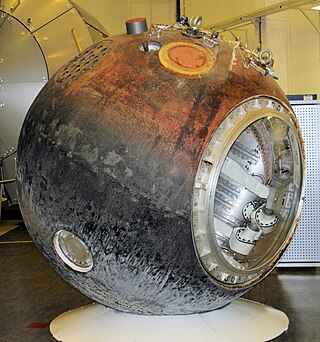Related Research Articles

Dothideomycetes is the largest and most diverse class of ascomycete fungi. It comprises 11 orders 90 families, 1,300 genera and over 19,000 known species. Wijayawardene et al. in 2020 added more orders to the class.

Radiotrophic fungi are fungi that can perform the hypothetical biological process called radiosynthesis, which means using ionizing radiation as an energy source to drive metabolism. It has been claimed that radiotrophic fungi have been found in extreme environments such as in the Chernobyl Nuclear Power Plant.

The Pleosporales is the largest order in the fungal class Dothideomycetes. By a 2008 estimate, it contained 23 families, 332 genera and more than 4700 species. The majority of species are saprobes on decaying plant material in fresh water, marine, or terrestrial environments, but several species are also associated with living plants as parasites, epiphytes or endophytes. The best studied species cause plant diseases on important agricultural crops e.g. Cochliobolus heterostrophus, causing southern corn leaf blight on maize, Phaeosphaeria nodorum causing glume blotch on wheat and Leptosphaeria maculans causing a stem canker on cabbage crops (Brassica). Some species of Pleosporales occur on animal dung, and a small number occur as lichens and rock-inhabiting fungi.

EXPOSE is a multi-user facility mounted outside the International Space Station (ISS) dedicated to astrobiology. EXPOSE was developed by the European Space Agency (ESA) for long-term spaceflights and was designed to allow exposure of chemical and biological samples to outer space while recording data during exposure.

A fungus is any member of the group of eukaryotic organisms that includes microorganisms such as yeasts and molds, as well as the more familiar mushrooms. These organisms are classified as one of the traditional eukaryotic kingdoms, along with Animalia, Plantae and either Protista or Protozoa and Chromista.
Black yeasts, sometimes also black fungi, dematiaceous fungi, microcolonial fungi or meristematic fungi is a diverse group of slow-growing microfungi which reproduce mostly asexually. Only few genera reproduce by budding cells, while in others hyphal or meristematic (isodiametric) reproduction is preponderant. Black yeasts share some distinctive characteristics, in particular a dark colouration (melanisation) of their cell wall. Morphological plasticity, incrustation of the cell wall with melanins and presence of other protective substances like carotenoids and mycosporines represent passive physiological adaptations which enable black fungi to be highly resistant against environmental stresses. The term "polyextremotolerance" has been introduced to describe this phenotype, an example of which is the species Aureobasidium pullulans. Presence of 1,8-dihydroxynaphthalene melanin in the cell wall confers to the microfungi their characteristic olivaceous to dark brown/black colour.

The wildlife of Antarctica are extremophiles, having adapted to the dryness, low temperatures, and high exposure common in Antarctica. The extreme weather of the interior contrasts to the relatively mild conditions on the Antarctic Peninsula and the subantarctic islands, which have warmer temperatures and more liquid water. Much of the ocean around the mainland is covered by sea ice. The oceans themselves are a more stable environment for life, both in the water column and on the seabed.
Roseli Ocampo-Friedmann was a Filipino-American microbiologist and botanist who specialized in the study of cyanobacteria and extremophiles. Her work has been cited in work exploring the terraforming of Mars.

BIOPAN is a multi-user research program by the European Space Agency (ESA) designed to investigate the effect of the space environment on biological material. The experiments in BIOPAN are exposed to solar and cosmic radiation, the space vacuum and weightlessness, or a selection thereof. Optionally, the experiment temperature can be stabilized. BIOPAN hosts astrobiology, radiobiology and materials science experiments.
Moesziomyces antarcticus is a species of fungus in the order Ustilaginales. The species occurs as a yeast and was originally isolated from Antarctic lake sediment. It is a rare cause of human fungaemia infections.

Teratosphaeriaceae is a family of fungi in the order Mycosphaerellales.

Phellodon niger, commonly known as the black tooth, is a species of tooth fungus in the family Bankeraceae, and the type species of the genus Phellodon. It was originally described by Elias Magnus Fries in 1815 as a species of Hydnum. Petter Karsten included it as one of the original three species when he circumscribed Phellodon in 1881. The fungus is found in Europe and North America, although molecular studies suggest that the North American populations represent a similar but genetically distinct species.
Daniela Billi is an Italian astrobiologist working at the University of Rome Tor Vergata. She is known for her work on desert cyanobacteria of the genus Chroococcidiopsis.
Cryomyces minteri is a fungus of uncertain placement in the class Dothideomycetes, division Ascomycota. The rock-inhabiting fungus that was discovered in the McMurdo Dry Valleys located in Antarctica, on fragments of rock colonized by a local cryptoendolithic community.

John Waldo Taylor is an American scientist who researches fungal evolution and ecology. He is professor of the graduate school in the Department of Plant and Microbial Biology at the University of California, Berkeley.

Fungal DNA barcoding is the process of identifying species of the biological kingdom Fungi through the amplification and sequencing of specific DNA sequences and their comparison with sequences deposited in a DNA barcode database such as the ISHAM reference database, or the Barcode of Life Data System (BOLD). In this attempt, DNA barcoding relies on universal genes that are ideally present in all fungi with the same degree of sequence variation. The interspecific variation, i.e., the variation between species, in the chosen DNA barcode gene should exceed the intraspecific (within-species) variation.
Knufia is a genus of fungi in the family Trichomeriaceae.
Austrolecia is a fungal genus in the family Catillariaceae. It is a monotypic genus, containing the single crustose lichen species Austrolecia antarctica. Both the genus and species were described as new to science in 1984 by German lichenologist Hannes Hertel. The lichen is found on the boulders and moraines of Livingston Island. Indicator species analysis suggests that the lichen prefers to grow on north-facing rock surfaces.
In mycology, a dark taxon is a taxon that does not appear to produce any observable morphological structure and that appears impossible to cultivate in laboratory conditions. Dark taxa are chiefly detected by DNA sequencing, and in particular environmental metabarcoding.
References
- ↑ Selbmann L, de Hoog GS, Mazzaglia A, Friedmann EI, Onofri S (2005). "Fungi at the edge of life: cryptoendolithic black fungi from Antarctic deserts". Studies in Mycology. 51: 1–32.
- ↑ Onofri S, Barreca D, Selbmann L, Isola D, Rabbow E, Horneck G, de Vera JP, Hatton J, Zucconi L (2008). "Resistance of Antarctic black fungi and cryptoendolithic communities to simulated space and Martian conditions". Studies in Mycology. 61: 99–109. doi:10.3114/sim.2008.61.10. PMC 2610303 . PMID 19287532.
- 1 2 Onofri, S; Selbmann, L; Pacelli, C; de Vera, JP; Horneck, G; Hallsworth, JE; Zucconi, L (19 June 2018). "Integrity of the DNA and Cellular Ultrastructure of Cryptoendolithic Fungi in Space or Mars Conditions: A 1.5-Year Study at the International Space Station". Life. 8 (2): 23. doi: 10.3390/life8020023 . PMC 6027225 . PMID 29921763.
- ↑ Pacelli, C; Selbmann, L; Moeller, R; Zucconi, L; Fujimori, A; Onofri, S (2017). "Cryptoendolithic Antarctic Black Fungus Cryomyces antarcticus Irradiated with Accelerated Helium Ions: Survival and Metabolic Activity, DNA and Ultrastructural Damage". Frontiers in Microbiology. 8: 2002. doi: 10.3389/fmicb.2017.02002 . PMC 5650992 . PMID 29089932.
- ↑ Pacelli, C; Selbmann, L; Zucconi, L; Coleine, C; de Vera, JP; Rabbow, E; Böttger, U; Dadachova, E; Onofri, S (February 2019). "Responses of the Black Fungus Cryomyces antarcticus to Simulated Mars and Space Conditions on Rock Analogs". Astrobiology. 19 (2): 209–220. Bibcode:2019AsBio..19..209P. doi: 10.1089/ast.2016.1631 . PMID 30067087.
- ↑ Sterflinger, K; Lopandic, K; Pandey, RV; Blasi, B; Kriegner, A (2014). "Nothing special in the specialist? Draft genome sequence of Cryomyces antarcticus, the most extremophilic fungus from Antarctica". PLOS ONE. 9 (10): e109908. Bibcode:2014PLoSO...9j9908S. doi: 10.1371/journal.pone.0109908 . PMC 4190365 . PMID 25296285.